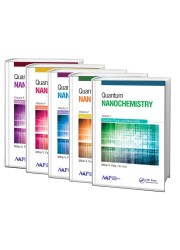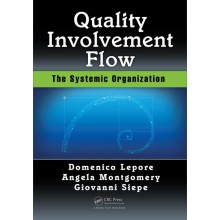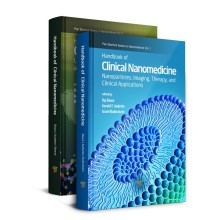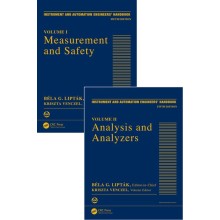Quantum Nanochemistry - Five Volume Set
Our Price: £679.50
Discount : 10%
Quantity:
-
Add to Compare
Summary
This new 5-volume set presents in a balanced yet progressive manner the fundamental and advanced concepts, principles, and models of quanta, atoms, molecules, solids, and crystal and chemical-biological interaction in cells. It also addresses the first and novel combinations and applications in modeling complex natural or designed phenomena. These new volumes by Dr. Putz embrace the best knowledge at the dawn of the twenty-first century of chemical bonding approaches while further advancing the chemical bonding approaches through the author’s own progressive vision, which highlights the concept of bosonic-bondon in artificial chemistry.
The author approaches the systematics of atoms-in-molecule progressive modeling, in relation to chemical reactivity indices that are rooted in the electronegativity and chemical hardness prime chemical descriptors, with a refreshing and fruitful perspective. He considers the influence of chemical bonding and extends that to chemical-biological interaction in cells and organisms toward recording the biological activity. He covers the relevant connections with chemistry and atomic/molecular structures for the constituent particles/nodes in crystals and solids, including the hot topic of the propagation of defects on graphenes. The work is rigorously, thoughtfully, and analytically presented, with a flexible, instructive, and creative physical-chemical style of presentation and should be well understood by both physical and chemical communities in the nanosciences fields. These volumes will help to stimulate the creative power of the reader interested not just in knowing and understanding nature through the eyes of quantum theory but also in using the necessary know-how to predict and drive the quantum information, coined the nano-scale systems.
The multi-volume book uniquely features:
- A multi-level unitary approach (atoms, molecules, solids, and chemical-biological interaction in an interrelated conceptual and applicative presentation)
- Fresh quantum views and models of atomic stability and molecular reactivity
- A new theory of chemical bonding by bosonic-bondons
- The first path integral applications in quantum chemistry
- The first bondonic analysis for the graphenic topological defects
The volume largely achieves the Organization for Economic and Co-operation Development’s (OECD) Quantitative Structure Activity Relationship (QSAR) fifth commandment ensuring mechanistically describing the chemical-biological interaction by prime structural causes—in short, explaining biological activity by chemical reactivity.
Table of Contents
Volume 1: Quantum Theory and Observability
Preface
Foreword by Eugene Kriachko, National Academy of Sciences of Ukraine
Phenomenological Quantification of Matter
Formalization of Quantum Mechanics
Postulates of Quantum Mechanics. Basic Applications
Quantum Mechanics for Quantum Chemistry
Index
Volume 2: Quantum Atoms and Periodicity
Preface
Foreword by Aranya B. Bhattacherje, University of Delhi, India
Historical Highlights on the Periodicity of the Chemical Elements
Quantum Assessment for Atomic Stability
Periodicity by Quantum Propagators and Density in Physical Atom
Periodicity by Peripheral Electrons and Density in Chemical Atom
Periodicity by Peripheral Electrons and Density in Chemical Atom
Quantum Algebraic and Stochastic Dynamics for Atomic Systems
Index
Volume 3: Quantum Molecules and Reactivity
Preface
Foreword by Joel Liebman, University of Maryland, Baltimore, USA
Modern Quantum Nature of The Chemical Bond: Valence, Orbitals and Bondons
Molecular Structure by Quantum Chemistry
Quantum Chemical Reactivity of Atoms-in-Molecules (AIM)
Modeling Molecular Aromaticity
Index
Volume 4: Quantum Solids and Orderability
Preface
Foreword by Ottorino Ori, Actinium Chemical Research, Rome, Italy
Bondons on Graphenic Nanoribbons with Topological Defects
Geometrical Crystallography
Quantum Roots of Crystals and Solids
Chemical Crystallography
X-Ray Crystallography
Index
Volume 5: Quantum Structure-Activity Relationships (Qu-SAR)
Preface
Foreword by Mircea V. Diudea, Babes-Bolyai University of Cluj-Napoca, Romania
Logistic Enzyme Kinetics
Statistical Space for Multivariate Correlations
Chemical Orthogonal Spaces for Structure-Activity Relationship (COS-SAR)
Index
Write a review
Your Name:Your Review: Note: HTML is not translated!
Rating: Bad Good
Enter the code in the box below:
Copyright © 2014 Engineering Standards Bureau. All Rights Reserved.
Developed By Zoom Into Web









